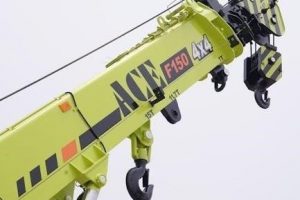folding drone user manual

EACHINE’s E56 Folding Drone delivers an exceptional flying experience, blending portability with advanced features. Discover the joy of effortless flight with one-handed gravity mode!
This manual guides you through setup, operation, and maintenance, ensuring safe and enjoyable flights. Welcome to the world of convenient, foldable drone technology.
What is a Folding Drone?
Folding drones represent a significant advancement in drone technology, prioritizing portability without sacrificing performance. Unlike traditional drones with fixed frames, these innovative aircraft feature arms that fold inwards, dramatically reducing their size for convenient storage and transport.
The EACHINE E56 exemplifies this design, offering a compact solution for aerial enthusiasts. This portability makes them ideal for travelers, hikers, and anyone seeking a drone that can easily accompany them on adventures. Despite their smaller size, folding drones often boast impressive features, including high-quality cameras and intelligent flight modes, providing a versatile and user-friendly experience.
Key Features and Benefits
Folding drones offer a compelling combination of convenience and capability. Key features include their compact, portable design, allowing for easy transport and storage. The EACHINE E56 specifically highlights a user-friendly experience, notably with its one-handed gravity mode for simplified control.
Benefits extend to accessibility for beginners and seasoned pilots alike. Intelligent flight modes, like Follow Me and Orbit, enhance the flying experience, while high-quality cameras capture stunning aerial footage. These drones provide a versatile platform for recreation, photography, and videography, all within a remarkably portable package.

Package Contents – What’s in the Box?
Upon opening your folding drone package, you should find the following components: the drone itself, a remote controller, and an intelligent flight battery. Additional items include spare propellers (typically a full set), a battery charger with the appropriate power cable, and a user manual for detailed instructions.
You’ll also receive a screwdriver for propeller replacement and potential maintenance. Some packages may include a carrying case for convenient transport and protection. Verify all listed items are present to ensure a complete and ready-to-fly experience. Retain the packaging for potential warranty claims or returns.

Safety Precautions & Regulations
Prioritize safety! Always adhere to local drone regulations and the FAA guidelines. Pre-flight checks are crucial for a secure and responsible flying experience.
Pre-Flight Safety Checklist
Before each flight, meticulously follow this checklist: First, fully charge the drone’s battery and the remote controller. Inspect propellers for any cracks or damage, replacing them if necessary. Ensure the gimbal is functioning smoothly and isn’t obstructed.
Confirm a strong GPS signal is acquired before takeoff. Verify the flight area is clear of people, obstacles, and restricted zones. Check weather conditions – avoid flying in high winds or precipitation. Calibrate the compass and IMU as needed for accurate flight control. Finally, confirm the Return-to-Home (RTH) altitude is appropriately set.
Understanding Drone Regulations (FAA/Local)
Compliance with regulations is crucial for safe and legal drone operation. In the US, the FAA requires drone registration for most aircraft. Pilots must pass the TRUST safety test and adhere to Part 107 rules for commercial operations. Always check for Temporary Flight Restrictions (TFRs) before flying.
Local regulations may further restrict drone use – research city, county, and state laws. Respect privacy and avoid flying over private property without permission. Maintain visual line of sight with your drone at all times. Failure to comply can result in fines and penalties.
Flying in Restricted Areas
Operating a drone in restricted airspace is illegal and dangerous. Airports, prisons, military bases, and national parks often have strict no-fly zones. Utilize apps like B4UFLY to identify these areas before each flight. Temporary Flight Restrictions (TFRs), often issued for events or emergencies, must also be observed.
Penalties for violating airspace restrictions can be severe, including substantial fines and potential legal action. Always prioritize safety and adhere to all regulations. Respecting these boundaries protects both airspace users and ensures responsible drone operation. Never assume an area is clear – verify it!

Drone Components & Overview
Familiarize yourself with the drone’s parts – propellers, motors, battery, gimbal, and camera. Understand the remote controller’s functions for optimal flight control and operation.
Identifying the Drone’s Parts
Let’s explore the key components of your folding drone! The propellers, crucial for lift and maneuverability, should be inspected for damage before each flight. Motors power these propellers, ensuring stable flight. The battery provides the energy, with its compartment easily accessible.
The gimbal stabilizes the camera, delivering smooth footage, while the camera itself captures stunning aerial perspectives. Don’t forget the landing gear, providing a stable base. Finally, the drone’s body houses all these components, designed for portability and durability; Understanding each part is vital for safe operation and maintenance.
Understanding the Remote Controller
Your remote controller is the key to commanding your drone! Familiarize yourself with the control sticks – left controls altitude and rotation, right manages forward/backward and sideways movement. The power button initiates the connection. Intelligent Flight Mode buttons activate features like ‘Follow Me’ and ‘Orbit’.

The camera control dial adjusts camera settings, while the Return-to-Home (RTH) button initiates automatic return. Status indicators display battery life and signal strength. Ensure fully charged batteries for optimal performance. Mastering the controller unlocks the full potential of your drone’s capabilities.
Battery and Charging Information
Your drone utilizes a high-capacity LiPo battery for extended flight times. Always use the provided charger to ensure safe and efficient charging. A full charge typically takes 60-90 minutes, indicated by a color change on the battery.
Never leave the battery unattended during charging! Avoid extreme temperatures and store batteries in a fireproof location. Low battery warnings will appear on the remote controller – land immediately when prompted. Proper battery care maximizes lifespan and ensures reliable performance. Disconnect after charging is complete.

Getting Started: Setup & Activation
Begin by downloading the official app and updating the drone’s firmware. Pair the drone and controller, then calibrate the compass and IMU for optimal flight performance.
Installing the App & Firmware Updates
To begin, download the dedicated app from the App Store (iOS) or Google Play Store (Android). Ensure compatibility with your smartphone’s operating system. Once installed, launch the app and create an account or log in if you already have one.
Next, connect your drone to your mobile device via the provided USB cable. The app will prompt you to check for firmware updates. Updating the firmware is crucial for optimal performance, stability, and access to the latest features. Follow the on-screen instructions carefully during the update process, ensuring a stable connection throughout. Do not interrupt the update!
A successful update will enhance your overall flying experience and resolve potential bugs.
Pairing the Drone and Remote Controller
Before initiating pairing, ensure both the drone and remote controller are fully charged and powered on. Within the drone’s app, navigate to the “Device Connection” or “Remote Control” settings. The app will guide you through the pairing process, typically involving pressing and holding a designated button on both devices simultaneously.
Observe the indicator lights on both the drone and remote. A successful pairing is usually indicated by solid, illuminated lights and a confirmation message within the app. If pairing fails, repeat the process, ensuring close proximity between the devices and minimizing potential interference.
A stable connection is vital for safe and reliable flight control.
Calibrating the Compass & IMU
Accurate compass and IMU calibration are crucial for stable flight and precise positioning. Within the drone’s app, locate the “Calibration” or “Sensors” section. Follow the on-screen prompts carefully, which typically involve placing the drone on a level surface and rotating it horizontally and vertically.
Avoid calibration near metal objects, power lines, or areas with strong magnetic interference. Successful calibration is indicated by a confirmation message in the app. Recalibrate if experiencing erratic flight behavior or GPS inaccuracies.
Regular calibration ensures optimal drone performance and flight safety.

Flight Controls & Operation
Master basic commands – takeoff, landing, and directional movement – using the remote controller. Explore intelligent flight modes like ‘Follow Me’ and ‘Orbit’ for enhanced experiences!
Basic Flight Commands (Takeoff, Landing, Movement)
Takeoff: Ensure a clear, open space. Simultaneously push both control sticks downwards and inwards (or use the auto-takeoff function if equipped). The drone will ascend and hover.
Landing: Gently lower the drone using the left stick (throttle) until it touches down. Alternatively, use the auto-landing feature for a controlled descent; Always land on a level surface.
Movement: The right stick controls horizontal movement. Push forward to fly forward, backward to fly backward, left to strafe left, and right to strafe right. Coordinate with the left stick for altitude control.
Practice these commands in an open area to gain proficiency before attempting more complex maneuvers.

Utilizing Intelligent Flight Modes (Follow Me, Orbit)
Follow Me Mode: Activate this mode within the app. The drone will lock onto your mobile device (ensure GPS is enabled) and follow your movements, maintaining a set distance. Be aware of surroundings and potential obstacles.
Orbit Mode: Select a subject on the app screen. The drone will circle around the selected point of interest, keeping it centered in the frame. Adjust orbit radius and speed within the app settings.
These modes enhance your aerial footage, providing dynamic and cinematic shots with minimal effort. Always monitor the drone’s flight path and be prepared to take manual control if needed.
Understanding Return-to-Home (RTH) Function
Return-to-Home (RTH) is a crucial safety feature. The drone automatically returns to its takeoff point if signal is lost, battery is critically low, or activated manually via the app.
RTH Altitude: Set a safe RTH altitude higher than surrounding obstacles in the app settings. This prevents collisions during the return flight. Ensure GPS signal is strong before initiating flight.
RTH Range: Understand the maximum RTH range specified in the drone’s specifications. Always maintain visual line of sight whenever possible, even with RTH enabled. Familiarize yourself with manual override procedures.

Camera & Gimbal Operation
Capture stunning aerial footage by adjusting resolution and frame rates within the app. Utilize gimbal controls for remarkably smooth and stable video recordings.
Adjusting Camera Settings (Resolution, Frame Rate)
Access camera settings through the drone’s mobile application interface. You can precisely control image and video quality by adjusting resolution options, ranging from 1080p to 4K, depending on your drone’s capabilities.
Frame rate selection is crucial for achieving desired motion effects; higher frame rates (60fps) are ideal for capturing fast-paced action and creating smooth slow-motion footage. Lower frame rates (30fps) are suitable for standard videos.
Experiment with different settings to find the optimal balance between image detail, video smoothness, and storage space. Remember that higher resolutions and frame rates require more storage capacity on your device.
Utilizing Gimbal Controls for Smooth Footage
The gimbal is essential for stable, professional-looking aerial footage. Within the app, access gimbal controls to adjust the camera’s tilt and pan angles, compensating for drone movement.
Utilize the gimbal’s stabilization modes – often including ‘Follow’, ‘Lock’, and ‘FPV’ – to suit your shooting style. ‘Follow’ smoothly tracks the drone’s orientation, ‘Lock’ maintains a fixed camera angle, and ‘FPV’ mimics a first-person view.
Fine-tune gimbal responsiveness to minimize unwanted vibrations and ensure silky-smooth video. Practice adjusting these settings to master cinematic aerial shots.
Photo and Video Recording Options
Your folding drone offers versatile photo and video capabilities. Access recording settings via the mobile app, adjusting resolution (e.g., 4K, 1080p) and frame rates (e.g., 30fps, 60fps) for optimal quality.
Explore shooting modes like single shot, burst mode (for rapid-fire photos), and time-lapse. Video options typically include standard video and cinematic modes, influencing color profiles and dynamic range.
Utilize pre-set shooting profiles or customize settings for creative control. Remember to format your SD card regularly to ensure sufficient storage for extended flights and recordings.

Maintenance & Troubleshooting
Regular cleaning and proper storage are vital for longevity. Address common issues like connection problems or propeller imbalances promptly for safe operation.
Cleaning and Storage of Your Drone
Maintaining your folding drone involves regular cleaning to remove dust, dirt, and debris that can accumulate during flights. Use a soft, dry cloth to wipe down the drone’s body and components. Avoid using liquids or harsh chemicals, as these can damage sensitive electronics.
For storage, ensure the drone is completely dry before placing it in a protective case. Disconnect the battery and store it separately in a cool, dry place. Properly securing the propellers prevents damage during transport. Store the drone in a location free from extreme temperatures and humidity to prolong its lifespan and ensure optimal performance for future flights.
Common Issues and Solutions
Experiencing connection issues? Ensure the drone and remote controller are fully charged and within range. Restarting both devices often resolves pairing problems. If the drone drifts, calibrate the compass and IMU following the instructions in the ‘Setup & Activation’ section.
For unresponsive controls, check propeller attachment and replace any damaged props. If facing camera issues, verify the SD card is properly inserted and has sufficient space. Consult the online support resources or contact customer service for more complex problems and detailed troubleshooting steps.
Propeller Replacement Guide
To replace propellers, power off the drone and secure it. Identify the correct propeller type – clockwise (CW) or counter-clockwise (CCW) – marked on both the propeller and the motor arm. Use a screwdriver to gently remove the screw securing the damaged propeller.
Align the new propeller with the motor shaft, ensuring correct rotation. Tighten the screw firmly, but avoid over-tightening. Always replace propellers in pairs to maintain balanced flight performance. Regularly inspect propellers for cracks or damage and replace as needed for safe operation.





































































